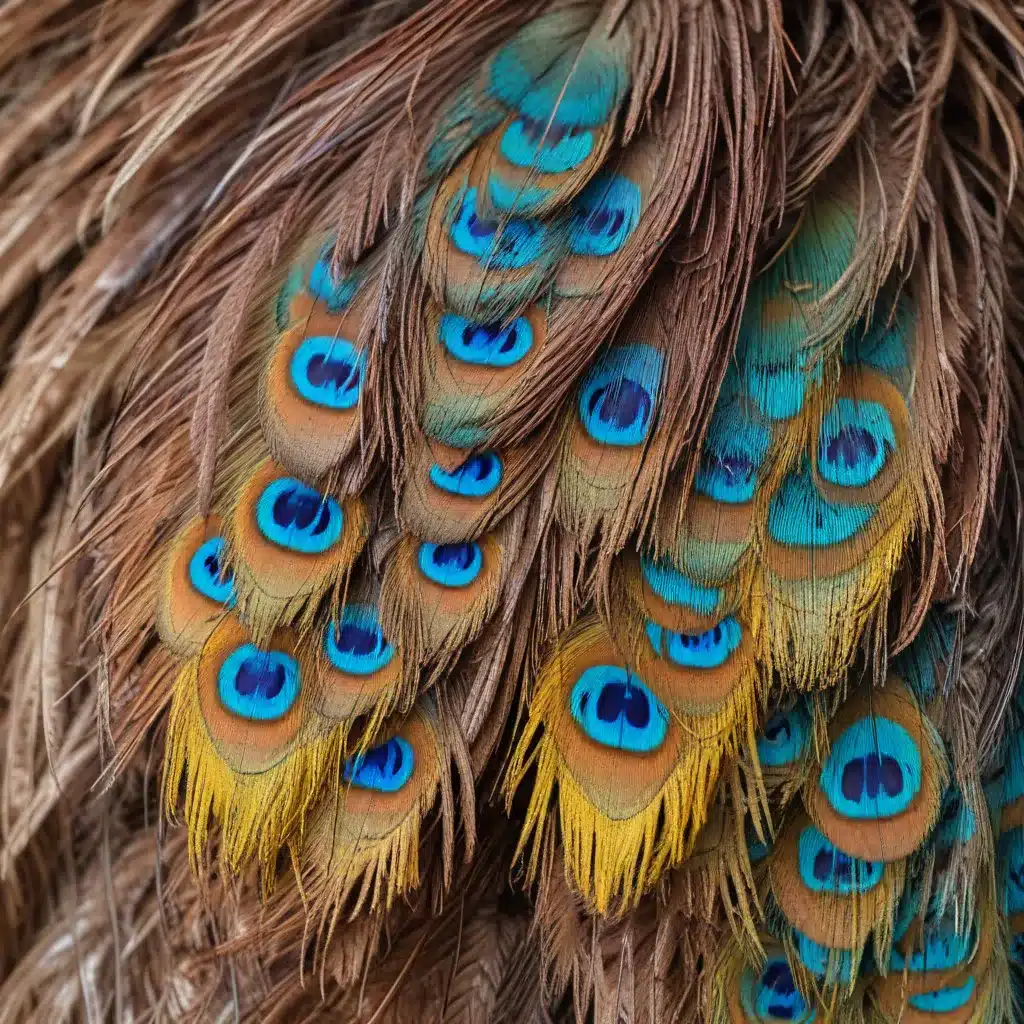
Avian Plumage Characteristics
As an experienced avian caretaker, I know that a bird’s plumage is a true marvel of nature. These intricate feathers not only enable flight and insulation, but also serve as a canvas for stunning visual displays. From the iridescent sheen of a hummingbird’s gorget to the bold patterns adorning a parrot’s wings, a bird’s feathers are a testament to the evolutionary ingenuity of these remarkable creatures.
Feather Structure and Function
Avian feathers are remarkable structures, composed of a central shaft (rachis) with barbs branching off on either side. These barbs are, in turn, lined with even smaller barbules that interlock to create the smooth, cohesive surface we recognize as a feather. This intricate architecture serves several critical functions – the overlapping arrangement of feathers provides thermal insulation and streamlined aerodynamics, while the flexible, yet sturdy, construction allows for the precision movements needed for flight.
Feather Pigmentation
The vibrant colors and patterns that adorn a bird’s plumage are the result of specialized pigment cells and the microscopic structure of the feather itself. Melanin granules, carotenoids, and other pigments are deposited within the feather’s keratin matrix, creating a stunning visual display. Additionally, the microscopic arrangement of the feather’s surface can interact with light to produce iridescent hues, further enhancing the plumage’s aesthetic appeal.
Feather Renewal and Molting
As a natural part of the avian life cycle, birds will periodically shed and replace their feathers through a process known as molting. This feather renewal allows birds to maintain optimal insulation, aerodynamics, and appearance. The timing and extent of molting can vary greatly between species, with factors such as age, reproductive status, and environmental conditions all playing a role in this cyclical feather replacement.
Nutritional Factors Influencing Plumage
Ensuring that a bird’s nutritional needs are met is a critical component of maintaining healthy, vibrant plumage. The balance and availability of key macronutrients, micronutrients, and other dietary components can have a profound impact on the quality, condition, and renewal of a bird’s feathers.
Macronutrient Requirements
Proteins, fats, and carbohydrates all play essential roles in the development and maintenance of a bird’s plumage. Adequate protein intake, particularly the availability of amino acids like methionine and cysteine, is crucial for the synthesis of feather keratin. Lipids, including omega-3 and omega-6 fatty acids, help to promote feather integrity, insulation, and overall plumage condition. Carbohydrates provide the necessary energy for feather growth and molting.
Micronutrient Importance
In addition to macronutrients, a bird’s diet must also include a balanced array of vitamins and minerals to support optimal plumage health. Vitamins A, B, and E, as well as minerals like zinc, iron, and copper, are all involved in feather pigmentation, structure, and renewal. Deficiencies in these essential micronutrients can lead to dull, brittle, or abnormal feather development.
Dietary Supplementation
For birds with specific nutritional needs or those experiencing plumage-related challenges, targeted dietary supplementation may be beneficial. Carefully selected vitamin, mineral, and amino acid supplements can help to address any nutritional imbalances and support the regeneration of healthy, vibrant feathers.
Targeted Nutritional Strategies
As an expert avian caretaker, I recommend a multifaceted approach to optimizing plumage health through targeted nutritional strategies. By assessing feather condition, customizing feeding regimes, and closely monitoring progress, we can help our feathered friends achieve and maintain their optimal plumage.
Feather Health Assessment
The first step in developing an effective nutritional plan is to thoroughly assess the bird’s current feather condition. This involves examining the feathers for any signs of damage, discoloration, or abnormal growth. By identifying any issues or areas of concern, we can then tailor the dietary approach to address the specific needs of the individual bird.
Customized Feeding Regimes
Based on the feather health assessment, we can then create a customized feeding regime that addresses any nutritional deficiencies or imbalances. This may involve adjusting the ratios of macronutrients, increasing the availability of key micronutrients, or incorporating targeted supplements. Regularly monitoring the bird’s response and making iterative adjustments to the diet is crucial for optimizing plumage health.
Monitoring Plumage Condition
Ongoing monitoring of the bird’s plumage is essential for evaluating the effectiveness of the nutritional strategies. By closely observing the feathers for improvements in color, texture, and overall condition, we can determine if the dietary changes are having the desired impact. This feedback loop allows us to fine-tune the feeding regimen and ensure that the bird’s nutritional needs are being met.
Optimizing Plumage through Diet
By carefully considering the specific nutritional requirements for healthy, vibrant plumage, we can develop targeted feeding strategies that support our feathered friends’ natural beauty and well-being.
Protein and Amino Acid Balance
As mentioned earlier, proteins and amino acids play a critical role in feather development and renewal. Ensuring that the bird’s diet provides an optimal balance of these essential nutrients, with a particular focus on methionine and cysteine, can help to promote the synthesis of strong, well-structured feathers.
Lipid and Fatty Acid Profiles
Fats and fatty acids contribute to the overall integrity and insulating properties of a bird’s plumage. Incorporating the right blend of omega-3 and omega-6 fatty acids, as well as other beneficial lipids, can help to maintain feather condition and support the natural molting process.
Vitamin and Mineral Optimization
A comprehensive array of vitamins and minerals is necessary to support the various aspects of feather health, from pigmentation to structural integrity. By carefully formulating the diet to provide the appropriate levels of nutrients like vitamins A, B, E, and minerals such as zinc, iron, and copper, we can help ensure that the bird’s plumage develops and renews in an optimal manner.
By adopting these targeted nutritional strategies, we can help our feathered companions achieve and maintain the vibrant, healthy plumage that is the hallmark of their species. Through a combination of careful assessment, customized feeding regimes, and close monitoring, we can foster feather health and enable our avian friends to thrive. For more information and resources on avian care, be sure to visit Mika Birds Farm.


